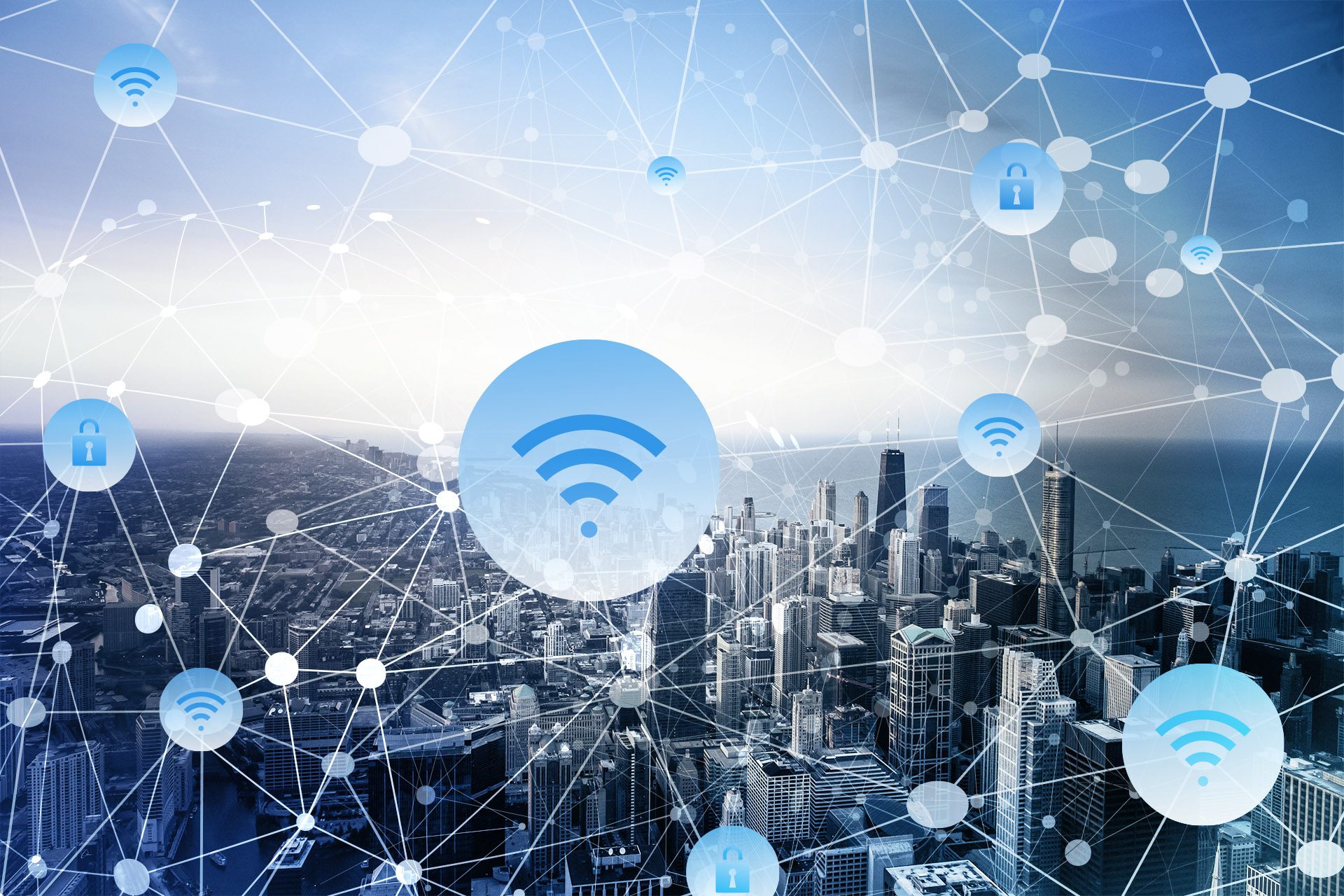
Remote water meter reading system – which one to choose?
In this article, you will learn:
-
what is remote water meter reading?
-
what types of remote water monitoring systems exist?
-
what are walk-by and drive-by meter reading systems?
-
how does a stationary water meter reading system work?
-
what are the differences between stationary and walk-by/drive-by automatic meter reading (AMR) systems?
-
how to build a hybrid water meter reading system that utilizes the advantages of existing solutions?
Automation and digitization of water distribution systems introduce a new level of efficiency in water management, helping to reduce water losses. Emerging technologies have revolutionized how water meters are read, eliminating inefficient manual water readings often prone to human error. This also improves the safety of workers. Current remote water meter reading systems leverage various wireless communication techniques. Among them are short-range techniques such as Wireless M-Bus and long-range LPWAN protocols like LoRa WAN, SIGFOX, LTE-M, and NB-IoT. Short-range techniques are commonly used in walk-by and drive-by AMR systems, while long-range ones are deployed in stationary water meter reading systems. This article explores how wireless water meter reading systems operate, the benefits they bring, and their limitations.

What is an Automatic Meter Reading?
Automatic meter reading, or AMR, is a telemetry technology that allows automatic data transmission from utility meters. The data collected from water, gas, heat, or electricity meters is sent to a central system, which is analyzed and used for customer billing. Automatic remote meter readings operate via telecommunications infrastructure such as cellular networks, unlicensed radio frequencies, or PLC (Power Line Communication).
The benefits of Automatic Meter Reading technology
Automated, remote measurements save the time typically spent visiting customers' premises and manually reading meter values. They also reduce the time for data transmission, which is often prone to human error. Additionally, AMR technology increases the safety of workers who no longer need to visit properties in person, and it simplifies data collection from water meters that are often located in hard-to-reach places. Reliable data enables more accurate billing based on actual usage, rather than estimated forecasts, allowing tenants and property managers to monitor consumption more precisely.
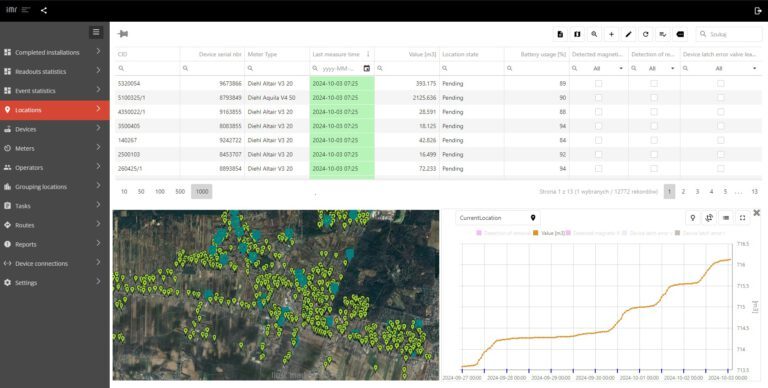
Remote utilities metering systems
Walk-by and drive-by water meter reading systems
Walk-by and drive-by water meter reading systems are part of manual meter reader-based data collection systems. In these systems, a worker (meter reader) equipped with a computer, tablet, or smartphone and a radio transceiver gathers data from smart water meters. Remote readings and automatic data transfers in walk-by and drive-by systems are enabled by short-range wireless communication, such as Wireless M-Bus.
In walk-by systems, the worker follows a designated route to collect data from water meters installed in specific locations. When the meter reader collects data from inside a vehicle, the system is known as a drive-by system. Then, an employee, while driving, automatically collects information from smart sensors installed on water meters.
While these systems automate data collection to some extent, they still require human involvement. If communication issues arise, the worker must personally visit problematic locations to manually read the water meters. Additionally, walk-by and drive-by meter readings are typically conducted once every month or two. This data frequency is insufficient for water utilities seeking to reduce water losses and promptly identify leaks in distribution networks or faults. Stationary water meter reading systems, which we will discuss further, are smart water meter solutions which address these challenges by offering continuous data collection.
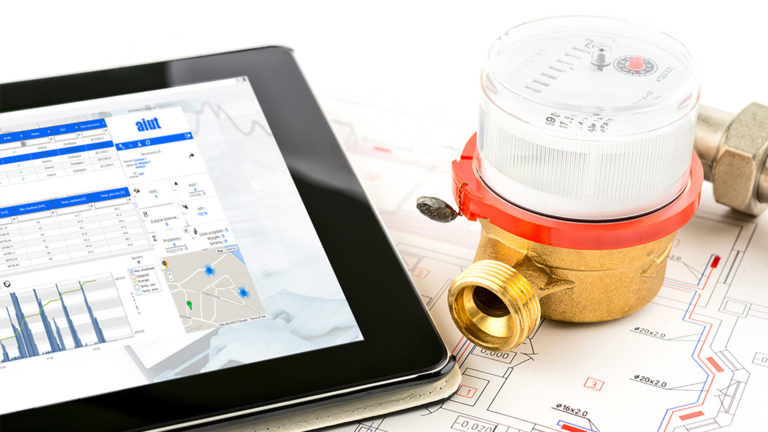
Walk-by and drive-by AMR systems for water meter reading: Key benefits and limitations in a nutshell
Benefits:
- Elimination of manual readings.
- Quick training of staff to collect meter data.
- Low implementation costs.
Limitations:
- Continued need for field staff known as meter readers.
- In-person visits required for difficult-to-access locations.
- High vehicle maintenance costs for drive-by systems.
- Time-consuming data collection.
- Low data collection frequency.
Wireless M-Bus
The Wireless M-Bus, or wM-Bus, communication standard was developed specifically for remote readings of water, gas, heat, and electricity meters. Its operations are defined in the European standard EN 13757, “Communication systems for meters and remote reading of meters. Part 4: Wireless communication in the M-Bus standard.”. The Wireless M-Bus protocol operates in the open ISM radio bands. In Europe, these are the 433 MHz and 868 MHz bands. For these frequencies, the Wireless M-Bus has three operating modes — S (Stationary), T (Transmit), and C (Compact). In mode "S," data is transmitted several times a day at a low transmission speed. Modes "T" and "C" provide very frequent data transmission (every 2-3 seconds) at high speeds — up to 100 kbps, with mode "C" also utilizing NRZ encoding. Each mode can operate in either unidirectional communication (C1, S1, and T1) or bidirectional communication (C2, S2, and T2). Unidirectional communication means that the transmitter continuously sends readings at a specified frequency to the receiver, which reads the meter data. Bidirectional communication means that the meter transmitter sends data only after receiving a request from the transceiver device, and remains in standby mode at other times.
The Wireless M-Bus technology is offered in compact water meters with electronic counters as well as in radio modules for water meters. An example of devices utilizing the Wireless M-Bus protocol is the series of IoT data loggers from AIUNEO, such as the APULSE x1F6, along with water meters from leading manufacturers like Itron, Sensus, Diehl, Apator, and others.
Stationary water meter reading system
Stationary water meter reading systems automatically transmit data from all monitored water meters to the system with hourly resolution. This large set of measurement data enables daily monitoring of the infrastructure and provides full diagnostics of the water supply network. The processed data offers a new level of quality in managing water distribution, and proper monitoring allows for the quick identification of malfunctions and leaks, helping to reduce water losses.
Stationary water meter reading systems require the construction of advanced metering infrastructure. In the monitored area, it is necessary to install concentrators that will receive data transmitted from smart data loggers (radio modules on water meters) and send it to the administrator's system. Additionally, proper communication between these devices must be established, a server must be set up and maintained, data must be secured, and the reading system must be integrated with the utility company's management systems, such as billing, balancing, and water supply network operations. Data transmission from water meter loggers is supported by LPWAN (Low-Power Wide-Area Network) technologies, which enable long-distance communication with low data rates and low energy consumption. These include technologies such as LoRa WAN, SIGFOX, LTE-M, and NB-IoT, which support existing IoT-class solutions. When using cellular technologies like LTE-M and NB-IoT, the entire technology is managed by the telecom operator, similarly with the SIGFOX radio technology, while in the case of LoRa WAN, the water utility manages the technology.
Although stationary water meter reading systems require the construction of dedicated, advanced metering infrastructure, they can be implemented gradually depending on the needs and capabilities of the specific water utility company.

Smart metering: Key benefits and limitations of stationary water meter reading systems in a nutshell
Benefits:
- Full automation of water meter readings.
- Advanced software for monitoring water consumption.
- Automated daily readout with hourly data resolution
- Complete control and diagnostics of the water network.
- Rapid identification of hidden leaks or faults.
- Reduced need for field workers known as meter readers.
Limitations:
- High implementation and maintenance costs.
- Potential communication disruptions in IoT networks.
LoRa WAN, SIGFOX, LTE-M, and NB-IoT – a brief overview of IoT technologies
LoRa WAN is one of the IoT transmission technologies that provides low-energy, wireless communication between devices. The practical communication range of LoRa technology extends from 1 to 5 km from the gateway in urban areas, while in rural areas, it can cover distances of several to dozens of kilometers. Sigfox, on the other hand, is an IoT technology designed for transmitting smaller data packets. A Sigfox frame carries up to 12 bytes of data, while a LoRa frame can carry up to 256 bytes. It is estimated that Sigfox technology can achieve a range of 30-50 km in rural areas and up to 10 km in urban areas. Sigfox technology enables the reception of information sent by a large number of devices; however, unlike LoRa WAN, it is primarily unidirectional – with limited communication back to the data loggers. To learn more about LoRa, check out the blog article: “LoRa vs. 5G: Which is Better for Your IoT Application?”. You can read more about Sigfox technology here.
NB-IoT (Narrowband IoT) and LTE-M (Long Term Evolution for Machines) are wireless communication technologies based on existing cellular network infrastructure, and their range depends on the operator’s infrastructure. Both solutions operate in licensed LTE frequency bands, which vary by region around the world. LTE-M technology offers significantly higher bandwidth (up to 1 Mbps) and lower latency than LoRa and Sigfox. As a result, it consumes more energy than the other solutions. NB-IoT, on the other hand, has lower bandwidth (up to 250 kbps) and very low energy consumption, comparable to LoRa and Sigfox. In both technologies, due to their organization and management by cellular operators, devices are required to use SIM cards and are subject to subscription fees.
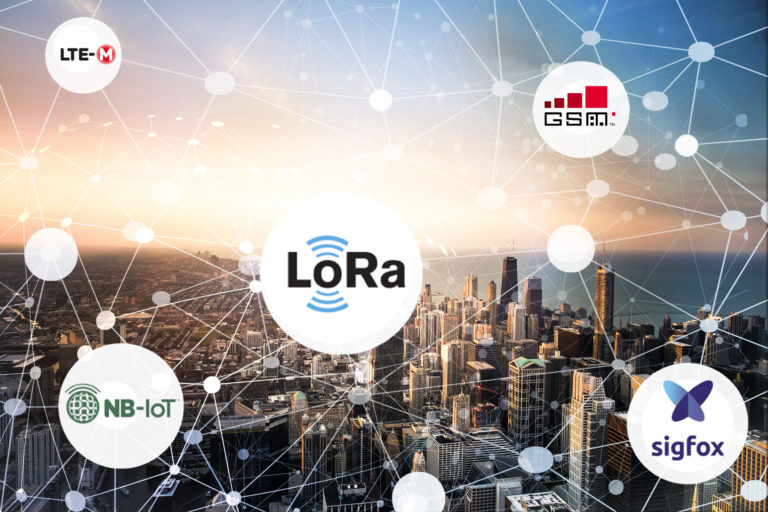
Is it possible to combine drive-by and stationary systems?
Both stationary and walk-by/drive-by reading systems have their own advantages and limitations. An ideal solution for water utility companies would be the ability to leverage the benefits of both systems. In this case, during communication disruptions in IoT-based stationary readings, it would be possible to perform supplementary readings could be performed by a meter reader. However, implementing and managing two different systems seems impractical due to the need for servicing and maintaining both.
Another solution that could harness the benefits of both water reading meter systems would be to develop a device that incorporates various communication techniques — both short- and long-range. However, using two radio technologies, such as Wireless M-Bus and NB-IoT, also does not make sense in terms of functionality and cost. It would require the device to have a cellular module with a SIM card, a radio module operating on the 868 MHz band, and two separate antenna circuits—an impractical solution.
Therefore, the only feasible method to build a hybrid water meter reading system is to choose complementary communication methods, such as LoRa WAN and short-range Wireless M-Bus. In this scenario, the radio module operates on the same components, using the common 868 MHz band, allowing the water meter's radio overlay to handle both stationary and drive-by systems without increasing costs. Such a hybrid system, operating based on complementary techniques, is an ideal solution for the water utility sector. In this case, the user fully benefits from primary IoT-based communication, while alternatively, in locations not covered by IoT networks, a worker can perform readings using the walk-by or drive-by system.
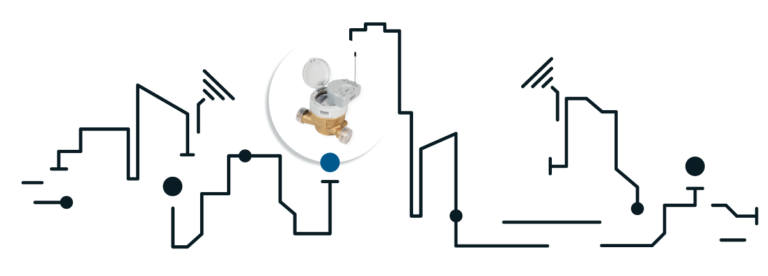
Hybrid water meter reading system: An example of smart metering
One of the providers of smart hybrid water meter reading systems on the market is AIUT AIUNEO. The APULSE x1F6 — IoT data logger for smart water metering, developed by AIUNEO — is designed for both walk-by and stationary readings. The overlay records pulses from the mechanical counter and transmits them as calculated water consumption data to the server via LoRa WAN or Sigfox technology. The received data is then processed by external data systems.
The APULSE x1F6 ensures reliable and timely readings even in cases of IoT communication disruptions. In such instances, walk-by readings are performed using Wireless M-Bus communication through the ARANGE 7076 device, which is connected via Bluetooth to a smartphone or tablet. Learn more about smart metering systems here https://aiuneo.com/en/home/
We encourage you to download the following materials regarding APULSE x1F6.
AIUT AIUNEO’s smart meter reading system is designed for both walk-by and stationary readings, allowing for reduced investment costs while maintaining high reading accuracy. The hybrid nature of the dual-system device enables a gradual and evolutionary investment approach, as well as flexible management.
Summary
The monitoring provided by stationary reading systems delivers precise information on the operating parameters of water and sewage networks. Through intelligent water system management, water losses are reduced, and quick responses to failures or leak detection are enabled. Hybrid remote water meter loggers allow for measurements even in cases of IoT network disruptions, and one of the manufacturers of such systems is AIUT AIUNEO.

Do you want to gain full control over your water meter readings with AIUNEO?
Discover how AIUNEO's smart metering systems can automate your water, energy, and gas management. With hundreds of successful implementations in the water, gas, and heating industries, AIUNEO offers proven smart solutions for optimizing your supply networks. Contact us today to learn how to fully automate your utility systems.
